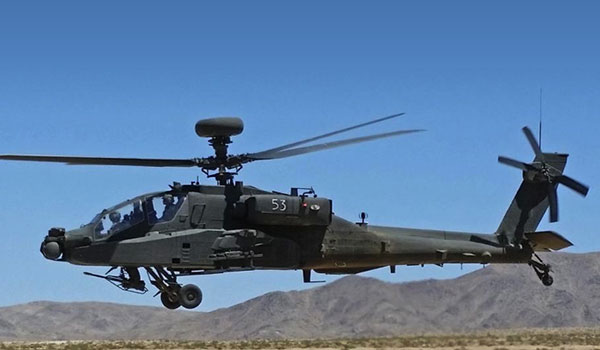
By Loren Thompson, forbes.com: When the Army and Air Force split to become separate military services after World War Two, the Air Force got almost all of the fixed-wing aircraft, and the Army got almost all of the helicopters. Today, 70 years later, the U.S. Army is the biggest operator of helicopters in the world, and every facet of its approach to conducting land warfare is shaped by the availability of vertical-lift assets.

The 2017 budget compromise Congress reached this week will provide $774 million for 52 remanufactured AH-64E Apache attack helicopters, $262 million for seven new Apaches, and $72 million for long-lead items used in ten additional Apaches. The Apache is built by Boeing.
However, once you have the world’s biggest fleet of helicopters, you have to maintain it. That has become increasingly difficult in the 16 years of continuous fighting that followed the 9-11 attacks. Army helicopters have taken a beating in the hot, dusty combat environment of Southwest Asia. It is not uncommon when forward-deployed helicopters are sent to depots for repairs to find over a hundred pounds of sand and grit in the airframes, the engines, and the on-board electronics.
The grit can be removed and the equipment can be overhauled, but many years of intensive operations — “high optempo” as they call it in the military — eventually takes a toll. A fleet that was relatively young when the U.S. invaded Afghanistan has grown old, and thus needs to be renewed by either buying new helicopters or remanufacturing old ones to a like-new condition.
But that requires money, and money for replacing aging equipment was hard to come by during the Obama years — especially for the Army. Congress capped military spending in 2011 for ten years, and while war-related expenses were left outside the caps, money for modernizing combat fleets was not. Since readiness and personnel costs always have to be funded first, the cumulative effect of capping outlays was to starve modernization accounts of the funding needed to keep up.
The Obama administration’s last annual budget request for the Army was especially hard on aviation, requesting a mere $3.6 billion for the procurement of new rotorcraft. That is about eight hours’ worth of federal spending for a year to modernize the world’s biggest helicopter fleet. It wasn’t anywhere near enough for a military service that had already decided it had to retire its venerable Kiowa armed recon (“scout”) helicopters but couldn’t afford to buy a replacement.
Click Here for Full article










